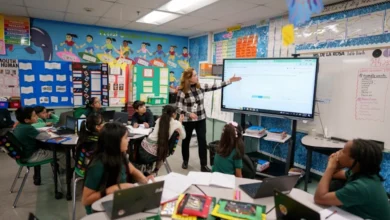National Online Learning Day: Understanding Its Promise and Potential

September 15 is National Online Learning Day, a day set aside to recognise the growth, impact, and possibilities of online education. It also honours the millions of students; children, youth, and adults who pursue learning through virtual platforms, often overcoming personal, social, and geographic barriers in the process.
What is National Online Learning Day?
National Online Learning Day was established to acknowledge the role of online education in expanding access to learning and to showcase how digital learning tools are reshaping the educational landscape.
Online learning is not limited to formal virtual schools. It includes:
- Full-time online schools
- Blended learning models combining online and in-person instruction
- College courses taken virtually
- Professional and technical certifications
- Supplemental digital resources used in traditional classrooms
For students who may struggle in conventional settings, due to health issues, bullying, anxiety, learning differences, or family circumstances, online learning offers a second chance and a different path to success.
The Advantages of Online Learning
While online learning does not replace traditional schooling, it provides distinct advantages that are reshaping education:
- Flexibility and Personalization
Students can learn at their own pace, revisit lessons, and work around health, family, or work commitments. - Accessibility and Inclusion
It removes geographic barriers, bringing education to rural or underserved communities and accommodating students with disabilities or chronic illnesses. - Expanded Learning Opportunities
Online platforms give students access to courses, experts, and extracurricular activities not always available locally. - Family Engagement
Parents can more easily monitor their child’s progress and stay in contact with teachers, strengthening the home–school connection. - College and Career Preparation
Students develop self-discipline, time management, and digital skills, competencies essential for post-secondary education and modern workplaces.
Addressing Common Misconceptions
Online learning is often misunderstood as being less rigorous or socially isolating. In reality:
- Students are held to the same academic standards as their peers in traditional schools.
- Virtual schools include live class sessions, group projects, clubs, and school activities that promote social connection.
- Online learning requires active engagement and accountability, not passive screen time.
These realities are seen across Ohio, where virtual schools such as the Ohio Digital Learning School (ODLS) provide structured learning environments for students who need a flexible or alternative path while maintaining high academic expectations.
Recognizing National Online Learning Day is a reminder that education should reflect this diversity by offering multiple, flexible pathways to success. For some students, neighborhood schools remain the right choice. For others, online learning provides a safe space to recover credits, rebuild confidence, and prepare for life beyond high school, whether that means college, technical training, or direct entry into the workforce.
Conclusion
As technology continues to evolve, online learning will likely become even more integrated into education at all levels. The lessons learned from digital schooling, about adaptability, student-centered learning, and the role of technology in equity will shape the future of education in Ohio and beyond.
National Online Learning Day invites us not to choose one model over another, but to recognise and value the role that online education plays in broadening opportunities and helping students of all ages pursue their dreams.





